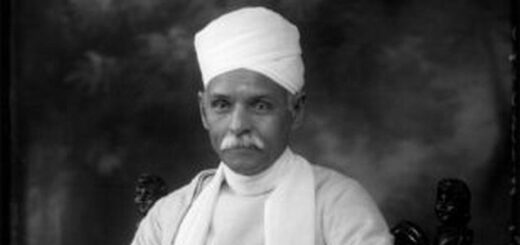National Current Affairs – UPSC/IAS Exams- 22nd October 2019
Topic: Reports and Indices
In News: The National Crime Records Bureau (NCRB) has recently released its annual ‘Crime in India’ report for the year 2017.
More on the Topic:
- Crime Registration and Rate: In 2017, there was an increase of 3.6% in registration of cases over 2016.
- Delhi witnessed the highest crime rate in the country with 1,050 Indian Penal Code (IPC) crime incidents per lakh of the city’s population.
- This was over four times the national average of 238.
- Crime Against Women: The number of crimes committed against women increased by 6% over the year 2016.
- Majority cases were registered under ‘Cruelty by Husband or His Relatives’ followed by ‘Assault on Women with Intent to Outrage her Modesty’.
- The maximum cases were registered in Uttar Pradesh (UP) followed by Maharashtra and West Bengal.
- Cyber Crimes: Bengaluru topped the list among metropolitan cities across the country in terms of number of cyber crimes registered.
- Bengaluru was followed by Mumabi and Jaipur.
- Riots: Out of the total 58,880 incidents of rioting reported, communal and sectarian riots accounted for 723 and 183 incidents respectively.
- There were 805 riots due to caste conflict and 1909 riots due to political reasons.
- Maximum incidents were reported from Bihar, followed by Uttar Pradesh and Maharashtra.
- Crime Against SC/STs: The incidents registered under the Scheduled Caste Prevention of Atrocities Act saw an increase from 5,082 incidents reported in 2016 to 5,775 in 2017.
- Incidents of crime related to Scheduled Tribes dipped from 844 in 2016 to 720 in 2017.
Fake news
- The NCRB for the first time collected data on circulation of “false/fake news and rumours.”
- Under the category, maximum incidents were reported from Madhya Pradesh (138), Uttar Pradesh (32) and Kerala (18).
Anti-National activities
- A new category of offences committed by various categories of “Anti-National Elements” was included.
- It showed that the maximum offences were committed by Left Wing Extremist (LWE) operatives (652), followed by North East insurgents (421) and Terrorists (Jihadi and other elements) (371).
- The maximum number of killings was carried out by LWE insurgents (82).
- As many as 72 of these killings took place in Chhattisgarh. This was followed by killings by terrorists (36) — 34 in J&K alone. North East insurgents killed 10 people.
Criticism:
- The new report has largely followed the pattern of the 2016 edition, barring additions in the category of cyber crimes and offences against the state.
- Data of death due to mob lynching, murder by influential people, killing ordered by khap panchayat and murder committed for religious reason have not been published.
Source: Indian Express
Topic: Cyber Security
In News: The National Cyber Security Coordinator’s office in partnership with Data Security Council (DSCI) of India launched TechSagar – a platform to discover India’s technological capability through a portal.
More on the Topic:
- TechSagar is a consolidated and comprehensive repository of India’s cyber tech capabilities which provides actionable insights about capabilities of the Indian Industry, academia and research across key technology areas.
- The portal will list business and research entities from the IT industry, startups, academia, and individual researchers.
- These include internet of things (IoT), Artificial Intelligence (AI), Machine Learning (ML), blockchain, cloud & virtualization, robotics & automation, ar/vr, wireless & networking, and more.
- TechSagar will allow targeted search, granular navigation and drill down methods using more than 3000 niche capabilities.
- As of now, the repository features 4000+ entities from industry, academia and research including large enterprises and start-ups providing a country level view of India’s cyber competencies.
- A dynamic platform, TechSagar, will be frequently updated with new entities and information to maintain its relevancy and usefulness.
Significance:
- In order to combat the growing threat from cyber crime, there is an urgent need to collaborate and develop cyber technology capabilities in India.
- With the launch of TechSagar, we have sown the seed for start-ups to prosper in cyber tech.
- This is a good example of government facilitating industry growth in a strategic domain.
Source: The Hindu
Digital Bharat Digital Sanskriti
Topic: e- Governance
In News: Union Ministry of State for Culture & Tourism has launched the E-Portal of CCRT ‘Digital Bharat Digital Sanskriti’ and CCRT YouTube Channel.
More on the Topic:
- This will enable dissemination of cultural education through digital interactive medium into the classrooms all over the country.
- For this initiative, CCRT has tied up with Routes 2 Roots, an NGO, for connecting seamlessly all the CCRT Regional Centres i.e., Guwahati, Udaipur and Hyderabad.
Source: PIB
Topic: International Affairs
In News: While Pakistan escaped blacklist status and international sanctions from FATF recently, it received a harsh rebuke from the body for failing to adequately crack down on terrorism financing and money laundering.
More on the Topic:
- Pakistan addressed only five out of the 27 tasks given to it for controlling funding to terror groups like the Lashkar-e-Taiba, Jaish-e-Mohammad and Hizbul Mujahideen, responsible for a series of attacks in India.
- As of now Pakistan in grey listed.
- Once a country is blacklisted, FATF calls on other countries to apply enhanced due diligence and counter measures, increasing the cost of doing business with the country and in some cases severing it altogether. As of now there are only two countries in the blacklist Iran and North Korea and seven on the grey list, including Pakistan, Syria and Yemen.
About FATF:
- The Financial Action Task Force (FATF) is an inter-governmental body established in 1989 on the initiative of the G7. It is a “policy-making body” which works to generate the necessary political will to bring about national legislative and regulatory reforms in various areas. The FATF Secretariat is housed at the OECD headquarters in Paris.
- The objectives of the FATF are to set standards and promote effective implementation of legal, regulatory and operational measures for combating money laundering, terrorist financing and other related threats to the integrity of the international financial system.
- The FATF monitors the progress of its members in implementing necessary measures, reviews money laundering and terrorist financing techniques and counter-measures and promotes the adoption and implementation of appropriate measures globally.
- In collaboration with other international stakeholders, the FATF works to identify national-level vulnerabilities with the aim of protecting the international financial system from misuse.
Source: Hindu
Topic: Digital Economy
In News: The Ministry of Electronics and Information Technology (MeitY) has launched a new version of of Bharat Interface for Money (BHIM) app i.e. BHIM 2.0.
More on the Topic:
- BHIM app, that was developed by the National Payments Corporation of India (NPCI), was launched in December, 2016.
- It is a Unified Payment Interface (UPI) that allows real time fund transfer.
- The new version of BHIM supports three additional languages Konkani, Bhojpuri and Haryanvi over and above the existing 13.
- Under BHIM 2.0, the existing cap of 20,000 has been increased to Rs. 1,00,000, from verified merchants.
- Other features include a ‘donation’ gateway, linking multiple bank accounts, option of applying in Initial Public Offering (IPO), gifting money, etc.
About UPI:
- The Unified Payment Interface is a payment system that allows money transfer between any two bank accounts through the medium of a smartdevices such as smart phone.
- UPI allows a customer to pay directly from a bank account to different merchants, both online and offline, without the hassle of typing credit card details, IFSC code, or net banking/wallet passwords.
Source: PIB
Topic: Reports and Indices
In News: The Global Wealth Report was released by Credit Suisse.
More on the Topic:
- According to the Credit Suisse Global Wealth Report, India’s total household wealth grew by 5.2% (in dollar terms).
- India remained one of the fastest wealth creators in the world, with household wealth (in dollar terms) growing faster than any other region.
- In India, net wealth per adult grew at 3.3%, sharply slower than the average 11% growth rate reported in the last 20 years (up to 2019).
- The report estimates that the average number is skewed heavily by a few wealthy individuals. However, India accounted for almost 2% of the world’s millionaires.
- The increase in household wealth in India in 2018-19 was mostly driven by rising home prices.
- But as the returns from real estate have come down in the past few years, this becomes a major factor that has contributed to the slowdown in the growth of household wealth.
Significance of the Report:
- Global wealth report has become the standard reference point to monitor wealth growth across countries and the extent to which wealth inequalities are widening or narrowing.
- The rising household wealth has a positive impact on consumer spending. Consumers feel more financially secure and confident about their wealth thereby increasing their spending. This also leads to asset appreciation which in turn can give an impetus to the slowing economy.
- The increased consumer and private spending can reduce the burden on the government to finance public expenditure.
- This will lower the load on State Exchequer lowering the fiscal deficit.
- The rising wealth can also lead to increased tax revenues of the government as rising wealth can sometimes lead to higher incomes for households.
- With higher incomes, the tax collected on income increases, which leads to increased revenues of the government and lower fiscal deficit.
Source: PIB
Topic: Polity and Governance
In News: The DNA Technology Regulation Bill, which seeks to control the use of DNA technology for establishing the identity of a person, has been referred to a parliamentary standing committee for examination.
Highlights of the Bill:
- As per the Bill, national and regional DNA data banks will be set up for maintaining a national database for identification of victims, suspects in cases, under-trials, missing persons and unidentified human remains.
- Punishment: According to it, those leaking the DNA profile information to people or entities who are not entitled to have it, will be punished with a jail term of up to three years and a fine of up to Rs. 1 lakh. Similar, punishment has also been provided for those who seek the information on DNA profiles illegally.
- Usage: As per the bill, all DNA data, including DNA profiles, DNA samples and records, will only be used for identification of the person and not for “any other purpose”.
- The bill’s provisions will enable the cross-matching between persons who have been reported missing on the one hand and unidentified dead bodies found in various parts of the country on the other, and also for establishing the identity of victims in mass disasters.
- The Bill establishes a DNA Regulatory Board to accredit the DNA laboratories that analyse DNA samples to establish the identity of an individual.
Benefits of the Bill:
- By providing for the mandatory accreditation and regulation of DNA laboratories, the Bill seeks to ensure that with the proposed expanded use of this technology in the country.
- There is also the assurance that the DNA test results are reliable and the data remain protected from misuse or abuse in terms of the privacy rights of our citizens.
Uses of DNA Technology:
- It is an extremely useful and accurate technology in ascertaining the identity of a person from his/her DNA sample, or establishing biological relationships between individuals.
- DNA technology is being increasingly relied upon in investigations of crime, identification of unidentified bodies, or in determining parentage.
- The expanded use of DNA technology would result not only in speedier justice delivery but also in increased conviction rates.
Source: Hindu



















